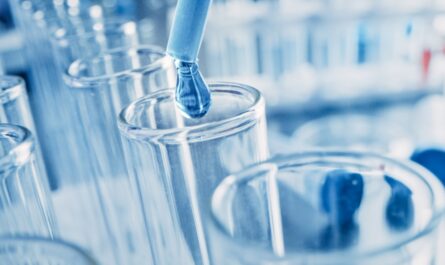
Insulin is a life-saving hormone for people living with diabetes. It has been available since the 1920s and has helped millions manage their condition. Traditionally, insulin has been developed by major pharmaceutical companies as brand-name products protected by patents. As patents expire for some of these products, biosimilars are now emerging as lower-cost alternatives. An insulin biosimilar is a biological product that is highly similar to an already approved biological reference product.
Development of Insulin Biosimilars
The development of biosimilars is more complex than typical generic small-molecule drugs due to the larger, more complex nature of biological products. Extensive analytical, nonclinical and clinical studies must demonstrate biosimilarity, meaning no clinically meaningful differences in terms of safety, purity and potency from the reference product. Manufacturers must show the biosimilar is just as safe and effective for its approved condition(s) of use as the reference product through extensive structural and functional characterization, animal testing, human pharmacokinetic and pharmacodynamic studies, as well as clinical trials if needed.
Regulatory Pathways and Approval
The U.S. Food and Drug Administration (FDA) and European Medicines Agency (EMA) have established pathways for approval of biosimilars. In the U.S., the Biologics Price Competition and Innovation Act of 2009 created an abbreviated licensure pathway for biological products shown to be biosimilar to or interchangeable with an FDA-licensed reference biological product. The EMA has also created specific guidelines for approval of biosimilar insulins in Europe through their centralized procedure. To date, several insulin biosimilars have been approved by the EMA and additional candidates are in the FDA approval process.
Cost Savings Potential of Insulin Biosimilars
As more biosimilar insulin products gain approval and market entry, they have the potential to drive down treatment costs for payers and patients. On average, insulin biosimilars are expected to cost 15-25% less than the reference product initially. This can result in sizable annual savings at both the individual and national level. For example, a new study projects that if three-quarters of insulin users in the U.S. switched to biosimilars, it could save the healthcare system $5.2 billion per year while providing considerable out-of-pocket savings for Americans with diabetes. Widespread biosimilar uptake has the power to make insulin therapy more affordable and accessible for millions worldwide.
However, adoption of insulin biosimilars has been slow thus far. Greater education of patients, physicians and pharmacists is still needed regarding their safety, efficacy and cost benefits compared to originator products. Barriers like interchangeability uncertainty can also hinder uptake. Proper incentives and policies may be required to maximize potential savings from biosimilar competition in diabetes care.
Switching Between Insulin Products
Switching between insulin products, whether branded or biosimilar, always requires medical supervision by a qualified healthcare professional. Though biosimilars are designed to be highly similar, small differences in formulation, dosing or administration methods compared to the reference product exist. A switching plan is important to monitor glycemic control and address any need for dose adjustments when transitioning between products. Patients should be counseled on how to recognize and manage potential side effects like hyperglycemia or hypoglycemia that may occur during the switching period. With appropriate precautions, many studies have demonstrated patients can be safely switched from reference insulin to biosimilars.
Registries and Post-Marketing Surveillance
To ensure long-term safety and benefit-risk are comparable once biosimilars reach the market, robust pharmacovigilance including patient registries and post-marketing surveillance are important. Registries can track clinical outcomes of biosimilar-treated patients over time and help identify potential rare/delayed adverse events not seen in pre-approval trials. Any safety signals detected from registries trigger further investigation. Manufacturers must also have plans to conduct post-approval safety and efficacy studies if needed. Ongoing monitoring like this helps validate biosimilarity and builds greater confidence in these products as treatment alternatives.
The Future of Insulin Therapy
As more biosimilar insulins gain worldwide approval in the coming years, they will increasingly provide lower-cost options for individuals and health systems managing diabetes. Achieving meaningful market penetration will rely on physician acceptance, patient willingness to switch, and proper policy/economic incentives. Over time, biosimilars may help lower treatment barriers by making insulin therapy more affordable and accessible on a global scale. Along with continued technological advances like inhaled/oral insulins and closed-loop delivery systems, biosimilars represent an exciting part of diabetes care’s evolution towards more convenient, cost-effective management solutions.


